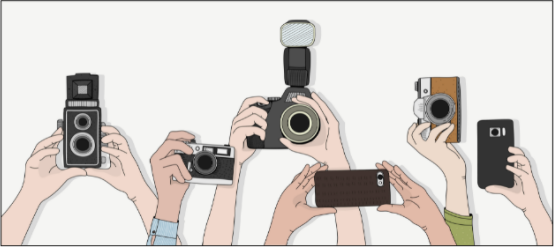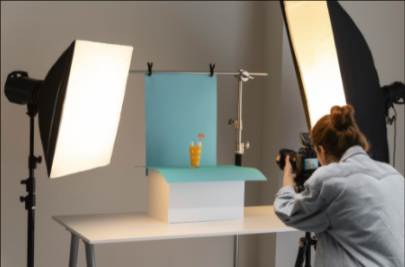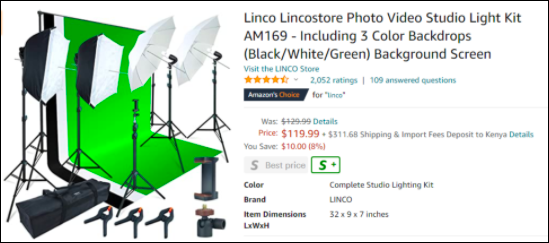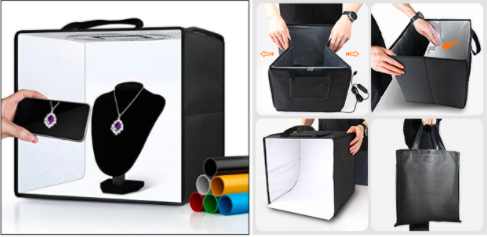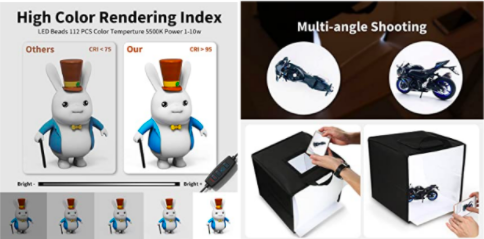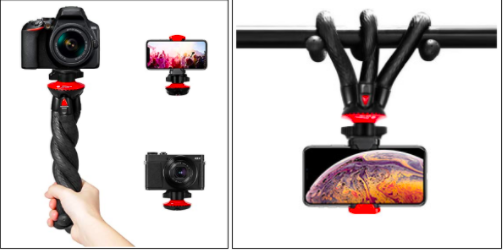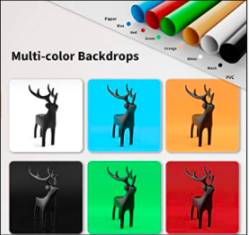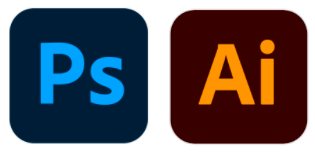Ecommerce Product Photography on a Budget
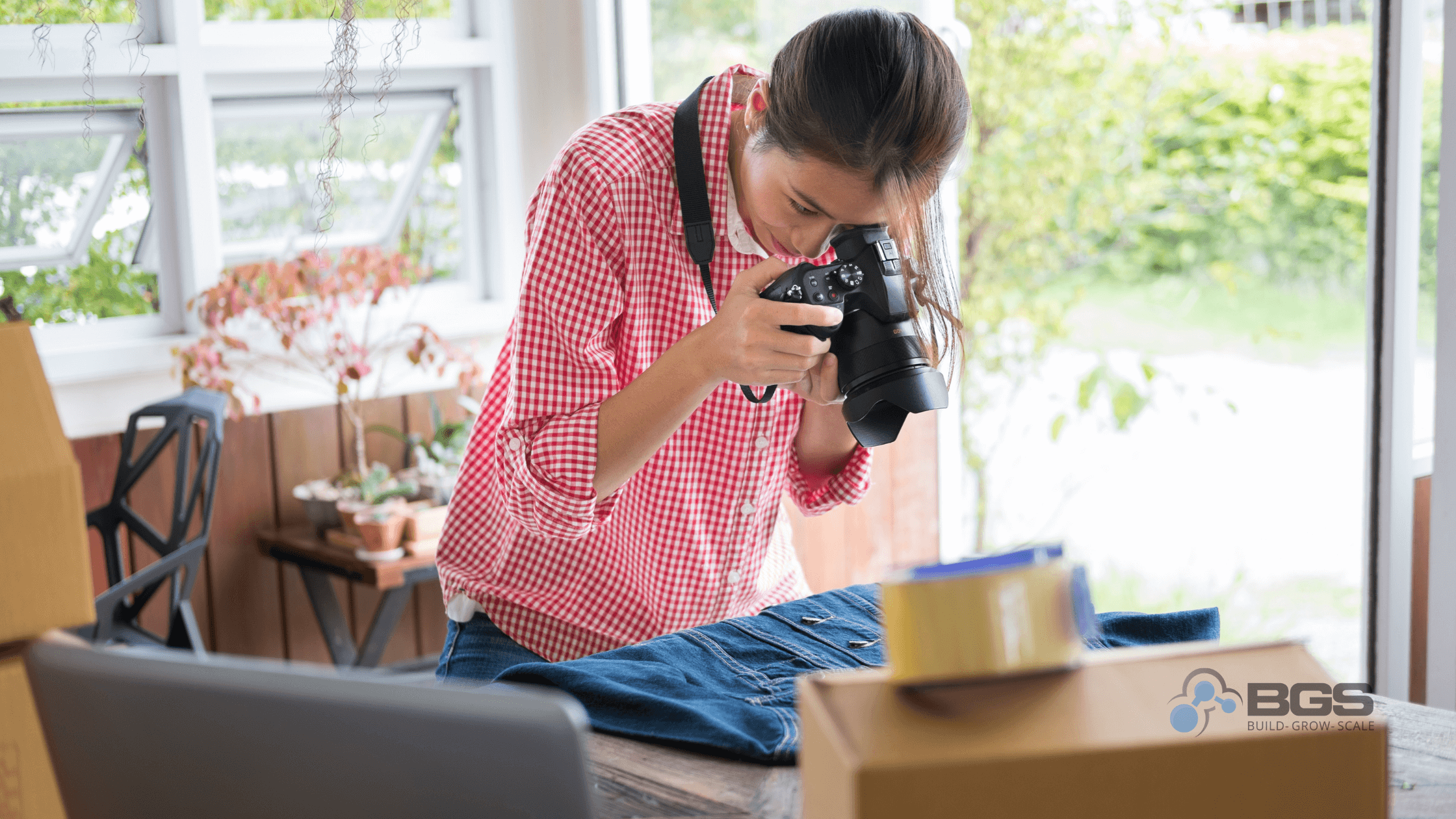
Irene Wanja | Aug 03, 2021
Reading Time: 5 minutesAn ecommerce product image is more than just the photo itself. It’s an emotional way for you to convey to customers what the product is about and how it can benefit them. It’s also a way to showcase your brand and what it stands for—and that’s why you need to know what you want the images to say and represent. But, is it possible to get quality photos with cheap product photography?
Taking good product images can be costly if you choose to hire a professional photographer, and this can be a limitation for some store owners who don’t have the budget. However, this shouldn’t be a problem because there’s a way to take good, professional photos for your product images yourself on a budget.
How to Take Ecom Product Images Yourself –
The cheap product photography Guide
To take high-quality ecommerce product images yourself, equip yourself with tools that can help you take professional images.
1. Smartphone or digital camera
These days, a smartphone can take very good pictures because their cameras are more and more advanced. You do still need a good smartphone with a 12-megapixel camera (and more) to take high-quality product images for your ecommerce store.
You can also use a good but inexpensive digital camera. Use a DSLR or mirrorless camera to take pictures from different angles so customers can get an idea of what the product looks like from different views. With these two options, you are capable of embracing cheap product photography but still obtain high quality ecommerce product photos.
2. Artificial or natural light
To capture amazing product images, you need good lighting. Whether natural or artificial, it must help you bring out the original color of the product and make the product features clearly visible.
To get the most out of natural light, take your photos in a brighter room, closer to a window. The larger the window, the brighter and more natural the light that flows into the room.
You can also buy an artificial light, which usually comes with an umbrella reflector. The reflector evenly reflects the light stream, which makes the product stand out. The entire photo studio light kit usually costs around $120.
Note: If you choose to use natural light, you are limited to taking product shots in daylight because you’re relying on the light from the sun, but artificial light can be used at any time.
3. Mini photo studio lightbox or cheap studio
A mini photo studio is one of the important tools that help with cheap product photography. It can be key to taking high-quality product photos, although it’s mainly used for small products such as watches, jewelry, headphones, and so on. Modern mini photo studios come with lighting, and this can really help because it’s adjustable, letting you capture the product color for your image that is most faithful to its actual color.
This portable photo booth kit is easy to assemble and can be used to take pictures from multiple angles. The cost is typically $16 and above, giving you a variety of options to choose from depending on your budget.
An inexpensive light studio can be used for large products, like home or office furniture. They can also be used to take lifestyle photos where models are wearing your products. If you choose to purchase one like that shown above, the kit comes with a number of backdrops (which I’ll describe below).
4. Tripod stand
To capture cheap product photography, a tripod is a must-have. This is a good investment. Because a tripod stand is stable, it helps reduce image shake and the blurry images that result. There are different types of tripod stands available in the market, but I recommend buying a flexible one as it allows you to take product pictures from different angles and can be attached to many surfaces.
5. Backdrops
A backdrop creates a continuous color background for the product. It helps eliminate distracting areas in the background, creating a seamless white, blue, black, green, or color-of-your-choice background. This makes photos look very professional and of great quality. Backdrops can be used in both a mini photo studio lightbox and a large light studio.
6. Photo-editing tool
When you’re done taking product photos for your ecommerce store, you need to analyze if their original quality is satisfactory or if adjustments are necessary.
You can use tools like Adobe Photoshop, Adobe Illustrator, or other photo editing tools like GIMP (GNU image manipulation program) and BeFunky, which charge varying amounts for use of their tools. These photo editing tools help you adjust the lighting of the photo by increasing or decreasing vibrancy and saturation, crop out unwanted parts of the photo, or combine different photos that highlight different product features into one photo.
Final thoughts on cheap product photography
When you want to implement cheap product photography to take quality product photos, you don’t have to spend a lot of money on a professional photographer (who, according to Pixpa, typically charges very high hourly rates, ranging from $75 to $250 per hour). All you need to do is equip yourself with a variety of shooting and editing tools. These can help you take high-quality product photos that convey your message and product features to customers in an emotionally based way.
Resources
Singh, G. (2021). Photography pricing guide: How much do photographers make in 2021? Pixpa blog.
Frequently Asked Questions
Shoot your products near a window or outside during daylight hours to take advantage of free, high-quality lighting and use a tripod as it helps eliminate camera shake, ensuring sharp and professional-looking images without the need for expensive equipment. Utilize free editing tools to enhance your product photos without spending money on expensive software.
To do simple product photography, opt for a plain, uncluttered background that won’t distract from the product, use a tripod that keeps the camera steady to ensure sharp and consistent images, and take shots from various angles to showcase different features and perspectives of the product, highlight important details or unique aspects of the product through close-up shots and use basic editing tools to adjust brightness, contrast, and color balance to make your product photos visually appealing.
The cost of product photography can vary significantly depending on several factors such as the complexity of the products, the level of expertise required, the number of images needed, and the location. On average, product photography can range from $25 to $150 per image for a basic setup. However, high-end commercial product photography can cost several hundred dollars or more per image.



Table of Contents
How to Take Ecom Product Images Yourself – 1. Smartphone or digital camera2. Artificial or natural light3. Mini photo studio lightbox or cheap studio4. Tripod stand5. Backdrops6. Photo-editing toolFinal thoughts on cheap product photography Frequently Asked QuestionsTable of ContentsAbout the authorLeave a Comment Cancel ReplyAbout the author
Irene Wanja
Irene, a skilled Revenue Optimization Specialist for Build Grow Scale, combines an unparalleled focus on user research and a deep understanding of the ecommerce customer journey to orchestrate optimal shopping experiences. With an uncanny knack for detecting and addressing customer pain points through meticulous user testing, she utilizes tools such as moderated user tests, heatmaps, scrollmaps, and clickmaps to fast-track improvements in user experience and usability. Her keen eye for detail aids in swiftly spotting potential issues and implementing solutions, all while working closely with store owners and applying her intricate comprehension of user interactions. Passionate about software and technology, Irene immerses herself in enhancing her clients' business clarity, efficiency, and user satisfaction. Even though the value of user experience doesn't conform to a conventional numerical scale, the tangible outcomes of her work—improved user experience, amplified retention rates, and reduced customer support issues—are testaments to her prowess. Beyond her revenue optimization skills, Irene is a skilled writer and copywriter. She weaves her profound insights into engaging prose, crafting content that not only resonates with diverse audiences but also demystifies the complexities of user experience, consequently benefitting businesses worldwide.



